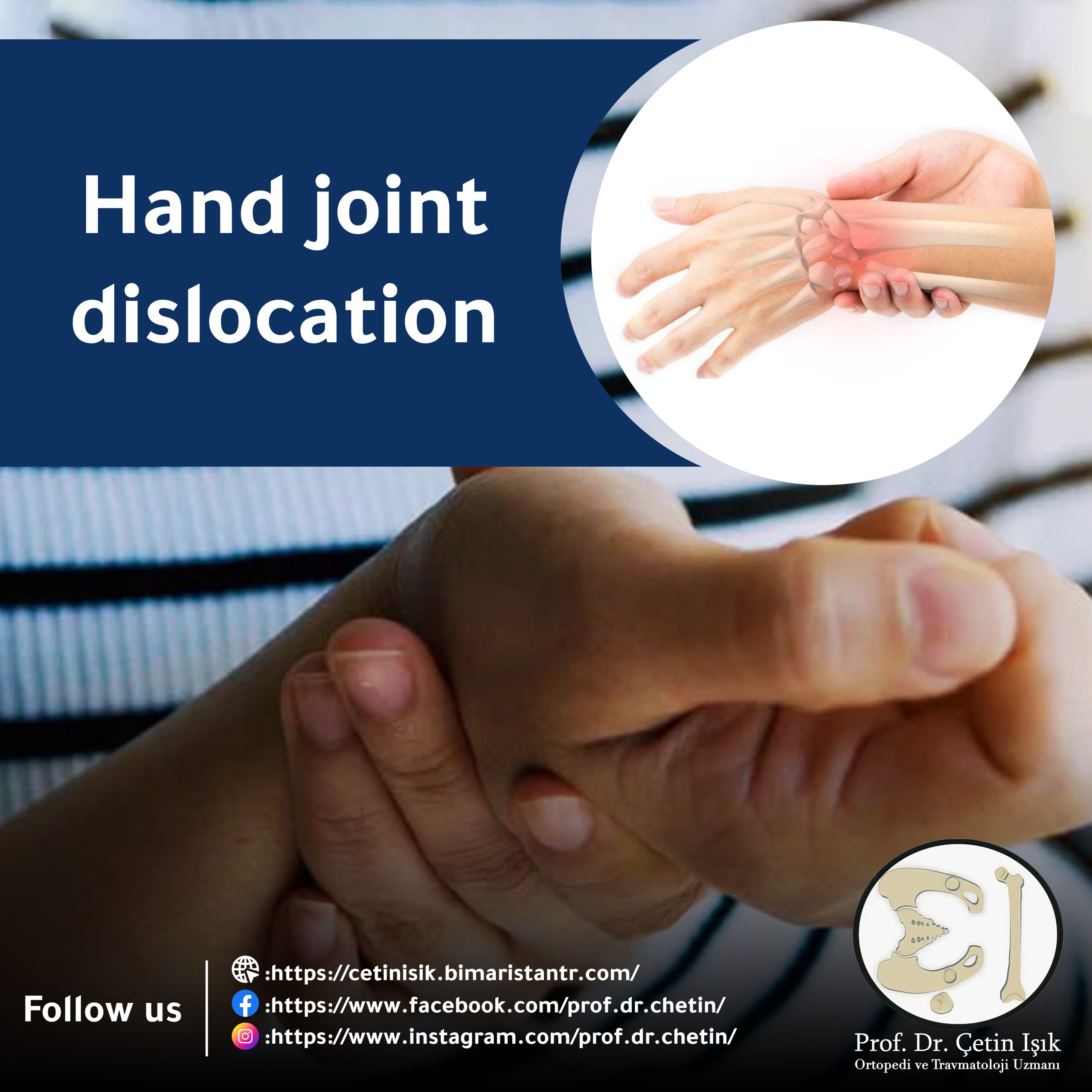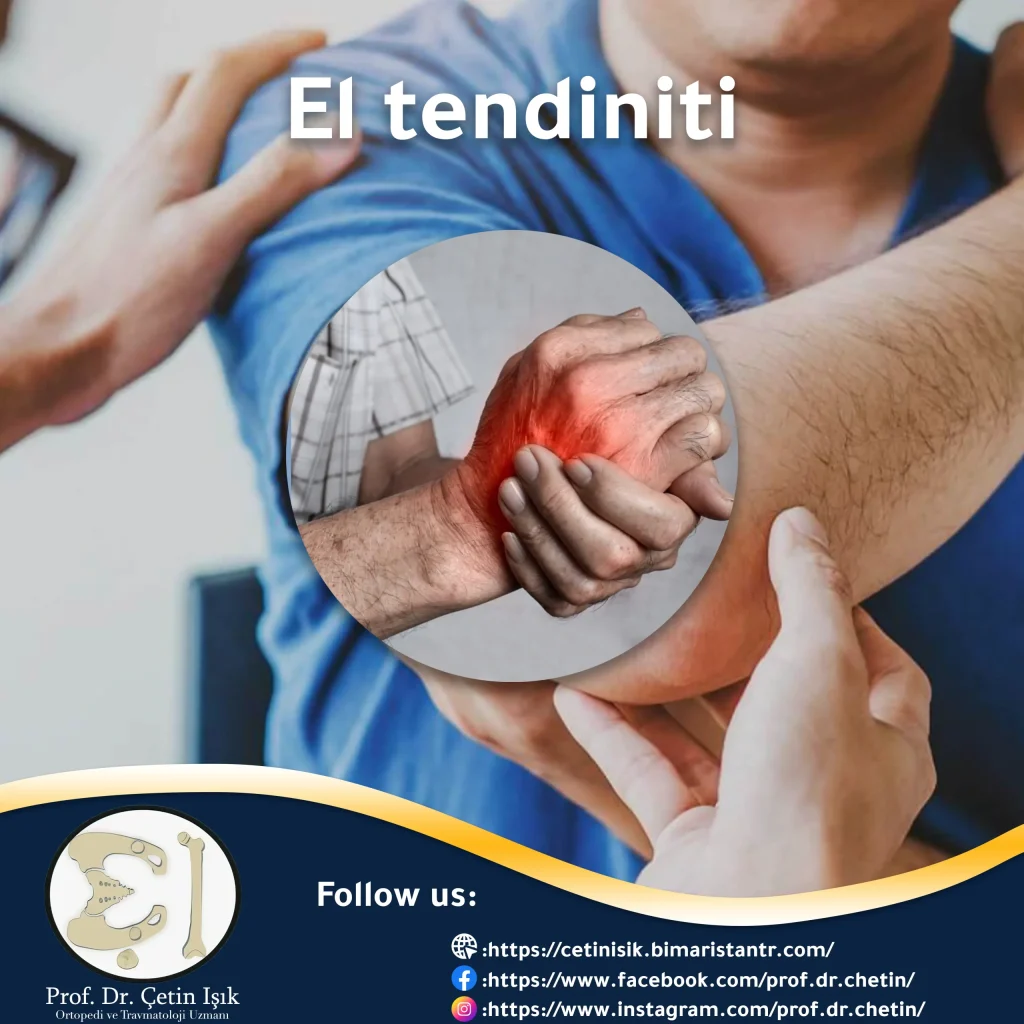Dislocation of the hand joint occurs when any of the bones in the wrist is out of place, and it is classified among the serious injuries because it may lead to the complete loss of hand function if it is not treated properly.
In this article, we talk about the dislocation of the hand joint, enumerate the causes leading to it, and its symptoms, and provide different treatment options for it. Follow us in this article, which provides you with all the information necessary to understand this injury.
What is a dislocated hand joint?
Joints are formed when several bones meet with each other. Dislocations occur when the bones that form any joint move from their place so that separation occurs between the surfaces of two or more bones.
The wrist bones are located in the upper part of the hand. These bones connect the arm that contains the forearm bones (ulna and radius) at the top with the metatarsals of the hand at the bottom. Any movement of these bones out of their normal place leads to a condition Hand dislocation.
There are 8 carpal bones in humans. These bones are covered with a group of ligaments that connect these bones to each other and ensure ease of movement. The rupture of the ligaments in this area can lead to the separation of one of these bones and the occurrence of dislocation in it, which results in the occurrence of a dislocated hand joint.

Hand joint dislocation in its various forms
The dislocation of the hand joint may result from the dislocation of any of the eight bones that make up the carpal bones in the hands, but the most common form of dislocation of the hand joint usually occurs in the scaphoid bone and the lunate bone, these bones that connect with the other wrist bones adjacent to it as well as the forearm bones There are a number of other different types of dislocation of the hand joint, including:
- Anterior dislocation of the lunate bone
- Vertebral dislocation: In this type, the ligaments around this bone are torn.
- Galliazi fracture: In this type, the ulnar-radial joint is dislocated with a fracture of the radius.
- Monteggia fracture: A fracture of the ulna with dislocation of the lower end of the radius.
Causes of hand joint dislocation
- Most wrist dislocations are caused by a strong force acting on the hand joint. Causes of a dislocated wrist include:
- severe sports injuries
- Falling on an outstretched hand
- A severe injury due to a traffic accident, which may cause fractures accompanying dislocation.
Symptoms of dislocation of the hand joint
The following signs and symptoms are present in a person with a dislocated hand, including:
- Severe pain when moving the hand.
- Difficulty or inability to move the hand, noting muscle weakness in the hand area.
- Feeling of numbness and tingling in the fingers of the hand, due to the pressure of the dislocated carpal bones on the carpal tunnel (the place where the nerves pass).
- Bruising and swelling of the hand.
Any dislocation of the hand can be associated with other injuries in the arm, fingers, or even in the shoulder or neck, as injuries may occur in other joints in the body, such as Shoulder dislocation Or it might happen Elbow joint dislocation When the bones that make up the elbow joint come out of place, the same mechanism and causes for hand dislocation occur.
Differential diagnoses of dislocation of the hand joint
There are a number of injuries and diseases in which the symptoms and the location of the injury are similar to the dislocation of the hand joint, including:
- carpal tunnel syndrome
- Hand fractures
- Rheumatoid Arthritis
- Soft tissue injury to the hand, eg Torn hand ligaments
Diagnosis of dislocation of the hand joint
Methods for detecting and diagnosing dislocation of the hand joint include the following steps:
Clinical examination
Upon the arrival of the injured, the doctor inquires about the history of the injured patient, and if he suffers from chronic diseases or is taking medication, then inquires about the cause that led to the injury. The place of pain that the patient complains about, and tests the special strength of the hand. The doctor will also move the arm and hand of the patient in several positions to examine their range of motion, in order to determine the location of the dislocated bones and injured ligaments.
radiography
Clinical examination alone can detect dislocation of the bones of the wrist and hand, but radiographic imaging confirms the injury and excludes other possible injuries. Radiographic diagnostic methods include:
- X-ray: A simple picture of the hand and arm can confirm a wrist dislocation.
- Magnetic resonance imaging: It is required if the doctor suspects a complete or partial sprain of the ligaments of the hand, as it gives an accurate picture of the position of the ligaments and soft tissues.
Hand joint dislocation treatment
The management and treatment of dislocated wrist bones are divided into:
Conservative treatment
It is performed in cases of simple dislocations, in which:
Closed reduction
A procedure in which orthopedic surgeons work to restore the dislocation of the palm joint (after diagnosing it and seeing it radiologically), by performing manual maneuvers in the form of pulling, tightening, and rotating the hand, in order to return the bones to their original position.

cast
After the procedure, a splint is applied to the joint of the hand, to ensure that the hand is immobilized.
Surgical treatment
In the most severe and severe injuries, surgery can be resorted to to repair the dislocated carpal bones and return them to their correct place. This surgery can be performed by opening the skin and showing the bones visually, and using nails and screws to fix the dislocated bones in place. Surgery can also repair torn ligaments, and after surgical treatment is indicated Gypsum placement for up to two months.

Physical rehabilitation
Whether after conservative treatment or surgical treatment, physical rehabilitation doctors give exercises that help restore muscle strength and normal movement of the hand, to avoid complications from the long period of joint immobilization.
In conclusion, dislocation of the hand joint is considered an emergency injury. It can include dislocation of the wrist bones or dislocation of the lower end of the forearm and radius bones. Clinical examination alone can diagnose a dislocation, but a simple X-ray is required to completely confirm the diagnosis and banish complications and fractures accompanying the dislocation. Treatment methods vary. Depending on the severity of the dislocation and its association with other assets, as it may include restoration, closed reduction, or surgical intervention.
Sources:
Common questions
Like all cases of orthopedic injuries, pain appears during the movement of the dislocated hand in various positions, and a change in color is noted at the site of the injury, in addition to the presence of swelling and a morphological defect of the hand compared to the healthy hand.
The dislocated hand is returned by a specialized and experienced doctor, who, after confirming the position and location of the dislocation by radiography, rotates, pulls and tightens the hand joint to return the dislocated bone to its place. We warn that the injured person should not attempt to re-dislocate his hand, because the wrong return leads to damage to the ligaments, nerves and blood vessels. .
Hand dislocation treatment in children is initially done by applying ice and pressure on the place of the child’s hand, then after establishing the diagnosis, the doctor decides the next step for treatment, as the dislocated bones may return to their original place on their own, or the doctor may work to restore the dislocation of the hand, and in severe cases, he may decide to overlap Surgical repair of dislocation with other existing injuries.
The length of the wrist dislocation treatment period depends on the type of treatment used. In conservative treatments through response, the duration of treatment is estimated at two to three months. After surgical treatment, a full recovery takes a period of six months to a full year.




